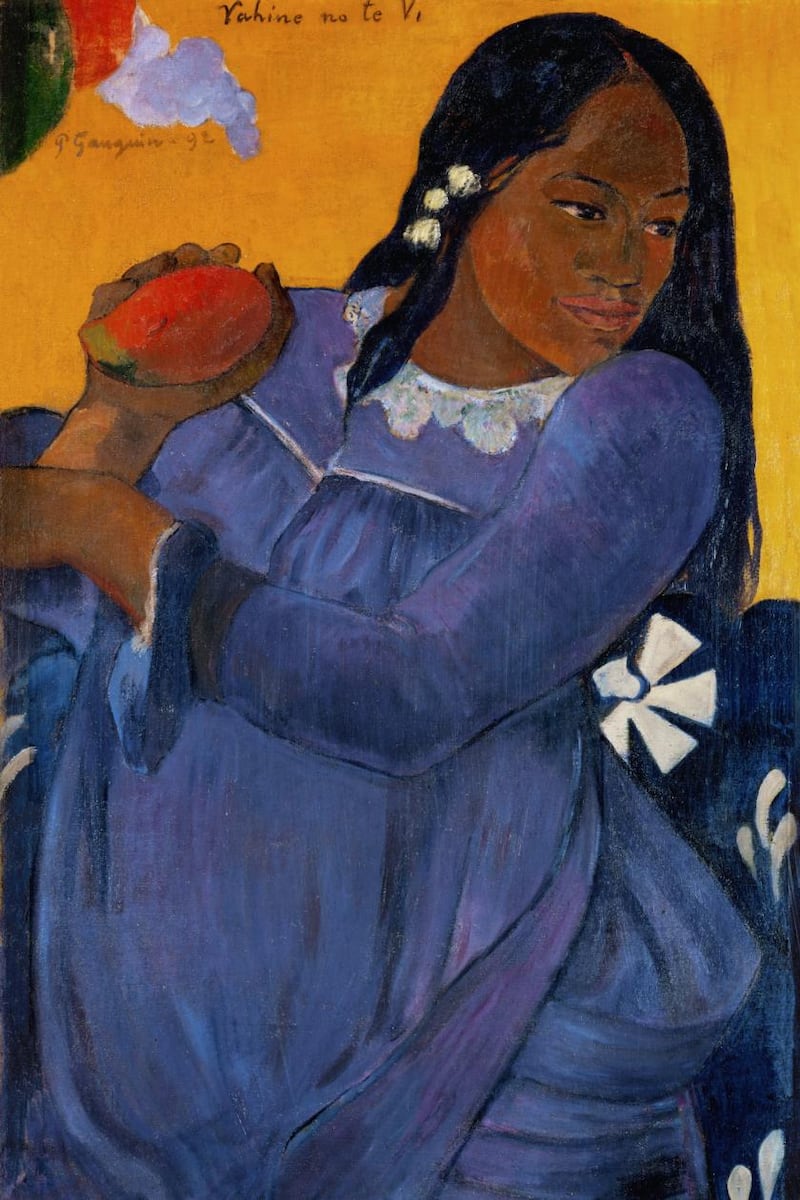
I Am Not Your Eve is the story of some of the girls and women who were central in the life of Paul Gauguin, the troubled and troublesome French Post-Impressionist artist. Born in Paris in the mid-19th century, Gauguin influenced many avant-garde artistic movements in the early 20th century, including the Fauves and Nabis. He died in French Polynesia, and this novel concerns his time in Tahiti and, mostly, his model and child “bride” Teha’amana.
Gauguin’s biographer Julius Meier-Graefe said the artist was a man who “may be charged with having always wanted something else”. Gauguin, a former merchant sailor and stockbroker, was already married to Danish woman Mette, and had five children with her, when an 1882 stock market crash cemented his decision to dedicate himself to painting, despite the financial hardships this would bring.
Devika Ponnambalam’s novel follows Gauguin in his later years, after his retreat from Pont Aven and his depiction there of Paris as a “rotten Babylon”; after his tumultuous stay with Van Gogh at Arles; and after his abandonment of his wife and family in Denmark. The artist was in search of “primitivism” and Tahiti was his chosen place.
The narrative in I Am Not your Eve is made up of a chorus of voices – different speakers take up the unfolding story: the young Tahitian “wife”, Teha’amana; Gauguin himself; his daughter Aline; and even Victorine Meurent – model for Manet’s famous painting Olympia – has her say. Ponnambalam does away, mostly, with timelines and signposts in the fragmentary voice-chapters she employs, so the reader must figure out who is speaking from the context.
The lack of scenes and dialogue keep the reader at arm’s length – there is little action and, as a result, little tension. The segments that retell the mythology of Polynesia have a distancing effect – their density and overpopulation make them impenetrable at times. Having said that, there are some devices that ground the reader: Aline’s entries are in Dear Diary form, and Gauguin’s own sections are in a distant third person. While some of the modes used to tell this story are knotty, each episode is short, and the poetic writing makes re-reading, for sense, pleasurable.

Mechanics and method aside, the reader recognises what the author is really in the business of spotlighting here: two pubescent girls – Teha’amana and Aline – are telling the story of the man they are both under the sway of, one as child-wife, one as discarded, loyal daughter. These young girls, and their wildly disparate lives, cause a successful clash in the reader’s mind – why is he sleeping with a child? Why has he cast off his daughter? Both girls’ voices bubble with anger and dissent in the unpicking of these problems, making them vivid and compelling.
The Gauguin presented is grumpy and sometimes tender, but distant – the novel is more concerned with the rivalry for affection by two girls who can never meet in person. Teha’amana’s family offer her as an artist’s model to Gauguin – an old, white man. He has asked for a girl – an “Eve” – so he is aware of Teha’amana’s approximate age – 13 – when he takes her in. Despite cultural norms at the time that meant Polynesian females married very young, large questions hover over this narrative: was Gauguin, who had sexual relationships with several adolescents, a known paedophile? Did the artist ever compare his pubescent “wife” to Aline, the daughter he abandoned to the mercy of disgruntled in-laws? How did he really regard his wife Mette, to whom he sent his Tahitian paintings to pass on to his dealer? How did Mette, and their children, feel about their desertion? Was Gauguin, ultimately, irredeemably self-centred, and devoid of empathy, and nothing more than an abuser?
Somerset Maugham told a version of the Gauguin story in his 1919 novel The Moon and Sixpence. Its narrator says in the opening page, “To my mind the most interesting thing in art is the personality of the artist; and if that is singular, I am willing to excuse a thousand faults.” In this novel, Ponnambalam begs us to reconsider this view.
By centring the voiceless, her novel is a euphonic exploration of child exploitation, colonised places, the lure of the exotic and the selfishness of the focussed artist. I Am Not your Eve is densely lyrical, very much a mood piece, but it raises important questions around colonial impositions, religion and the problem of power and, by various methods, teases out answers. The elliptical, fragmented text will please some readers and alienate others, but it is the strangeness in the delivery of the narrative that makes this novel so haunting and lovely.
Nuala O’Connor’s novel Nora: A Love Story of Nora and James Joyce (New Island) is the 2022 One Dublin One Book choice












